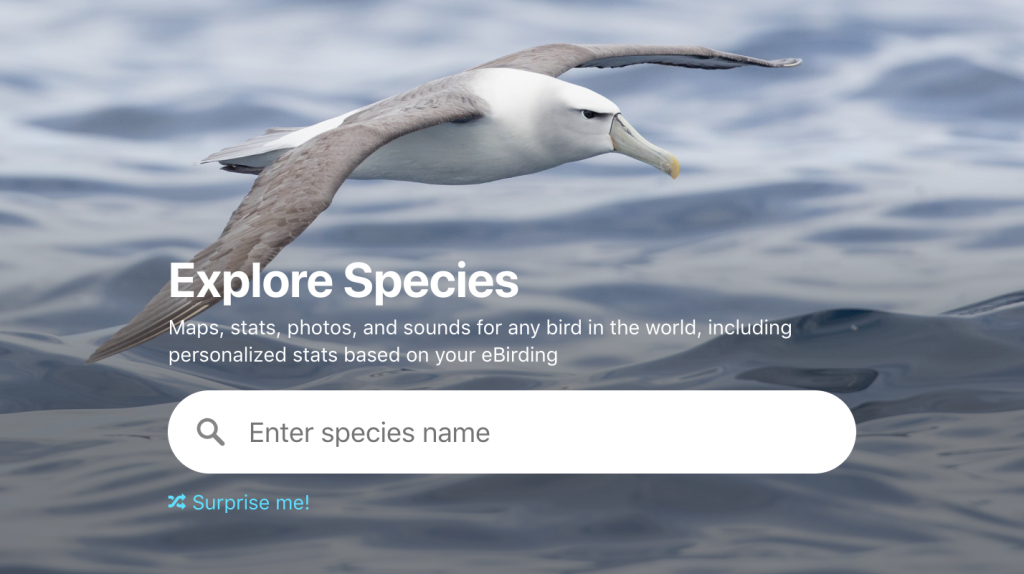This year has been a remarkable year for the Macaulay Library at the Cornell Lab of Ornithology thanks to 61,407 contributors from around the globe. We have a lot of successes to celebrate together as we head into 2019—the Macaulay Library’s 90th year! The community of recordists and photographers who archive their media in the Macaulay Library continues to grow by leaps and bounds with nearly 40,000 people archiving their media this year alone. In 2018, recordists contributed more than 120,130 recordings of 5,698 species and photographers uploaded more than 4.3 million photos of 9,491 species. What an amazing achievement! Thank you for helping build the Macaulay Library. In 2018, contributors also added more than 35 new species with audio recordings to the archive and more than 93 new species with photos. Prior to these additions, the archive lacked photos and sounds for these species, some of which are very rare or difficult to encounter—thank you for making the Macaulay Library the most complete digital archive of sound. Do you have photos or sounds that will help complete the archive? Find out by searching for our targets.
Tools built by your recordings and photos
Explore Species is a new tool built by the Macaulay Library and eBird that features your photos and sounds. This fun new tool unites the strengths of eBird, the Macaulay Library, and Merlin Bird ID all in one place. It’s everything we have to offer, for every species in the world—from Merlin’s ID tips to Macaulay’s media treasure trove and the core backbone of your eBird sightings. Check out Explore Species at ebird.org/explore
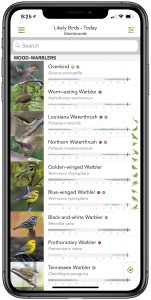 Merlin Bird ID now covers 30 countries with more than 3,000 species. Merlin includes bird ID tips and AI-powered Photo ID for all regularly occurring species from Canada south to Panama, plus Hawaii, 1,000 species in Colombia, Southeast Brazil, and Western and Northern Europe. The app now displays seasonal patterns of birds for your area on Explore Birds, and your eBird Life List is integrated in Merlin to let you know at a glance whether you’ve already seen a species. Merlin also expanded audio coverage for the U.S. and Canada bird packs. Sounds in Merlin can now be visualized with the in-app spectrogram player to help you learn birds songs. And Merlin is not done yet—in 2019 Merlin is looking to expand to the Caribbean, Chile, Israel, India, and Asia. If you have photos or audio recordings of birds, add them to your eBird checklist and your media might be featured in Merlin.
Merlin Bird ID now covers 30 countries with more than 3,000 species. Merlin includes bird ID tips and AI-powered Photo ID for all regularly occurring species from Canada south to Panama, plus Hawaii, 1,000 species in Colombia, Southeast Brazil, and Western and Northern Europe. The app now displays seasonal patterns of birds for your area on Explore Birds, and your eBird Life List is integrated in Merlin to let you know at a glance whether you’ve already seen a species. Merlin also expanded audio coverage for the U.S. and Canada bird packs. Sounds in Merlin can now be visualized with the in-app spectrogram player to help you learn birds songs. And Merlin is not done yet—in 2019 Merlin is looking to expand to the Caribbean, Chile, Israel, India, and Asia. If you have photos or audio recordings of birds, add them to your eBird checklist and your media might be featured in Merlin.
Last year marked the launch of the Photo + Sound Quiz—one of the best online tools for learning birds and brushing up on your ID skills. The quiz uses archived photos and sounds to test your knowledge of bird ID while helping curate media in the Macaulay Library. To date, almost 75,000 people tested their knowledge and took over 150,000 quizzes. As a result, users helped rate more than 3 million assets and tag more than 140,000 photos. Now it’s easier than ever to see top-rated media in the Macaulay Library thanks to you.
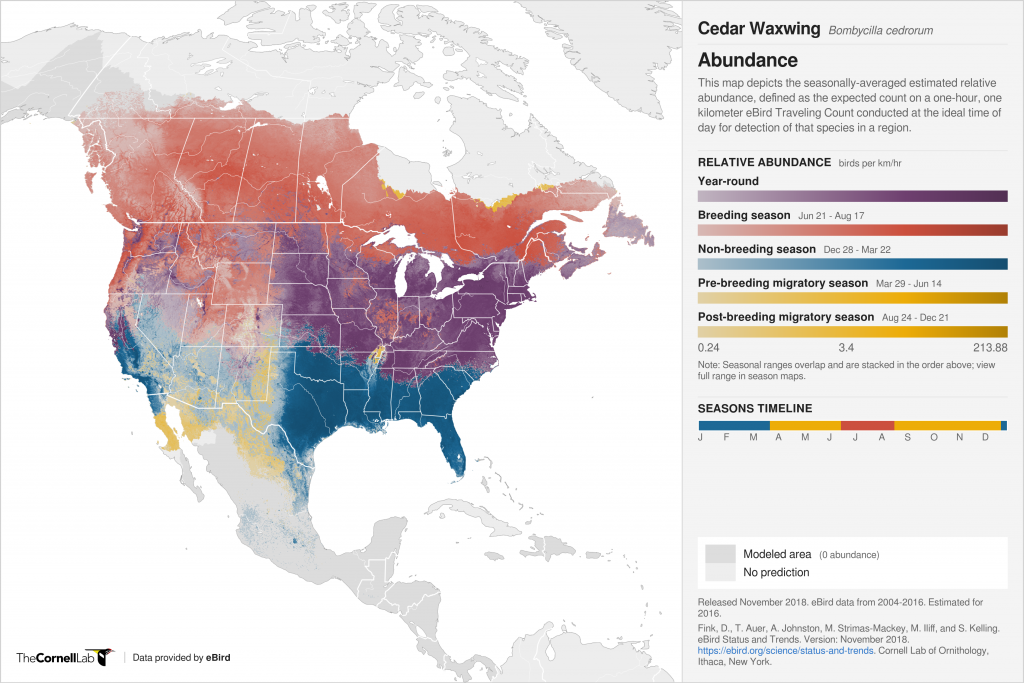 In 2018 eBird achieved a monumental milestone—Status and Trends. Detailed population information in now available for 107 species of North American birds, providing an unprecedented depth of information in four key areas: abundance maps, 10-year population trend maps, habitat association charts, and range maps. All of these data-driven maps have been archived in Macaulay Library.
In 2018 eBird achieved a monumental milestone—Status and Trends. Detailed population information in now available for 107 species of North American birds, providing an unprecedented depth of information in four key areas: abundance maps, 10-year population trend maps, habitat association charts, and range maps. All of these data-driven maps have been archived in Macaulay Library.
Improvements
In 2018, we redesigned our website to make it easier for you to find the information you need. We updated our resources for recording with smartphones and included information to help you set up common recording apps. We also improved the spectrogram player that allows you to easily see more of the spectrogram and quickly move to specific parts of the recording. Our media search page also got a new look with advanced filtering options. Learn more about how to find exactly what you need.
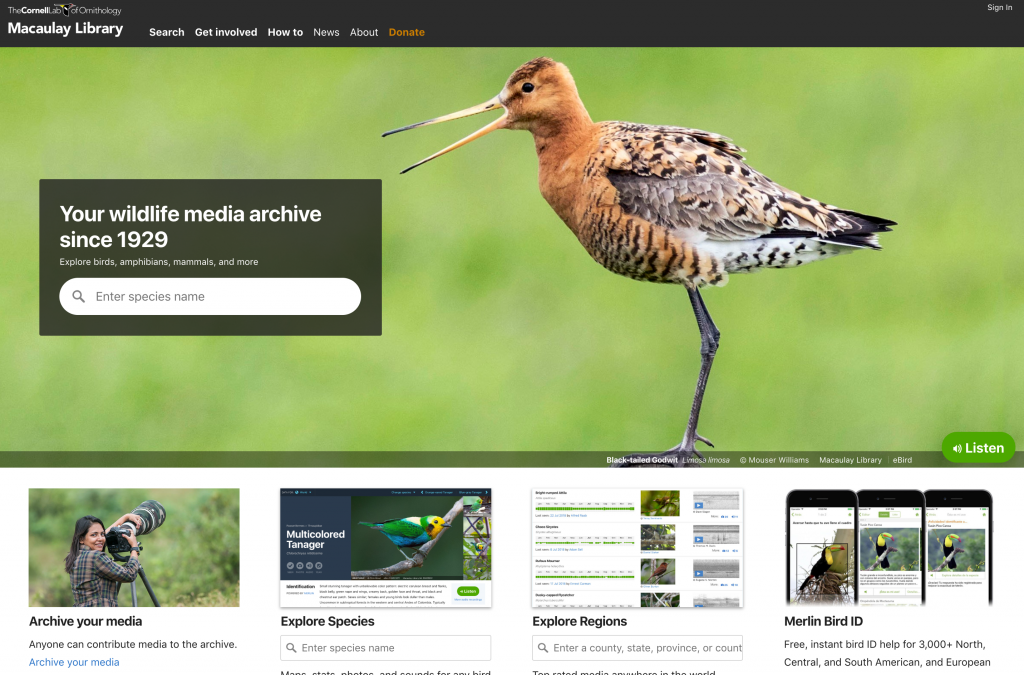
The Macaulay Library started sharing more news stories about research projects that use media from the archive and started a new series called “Recordist of Note” to highlight our amazing community of recordists. In 2019 we will continue to add more and more engaging stories and news, so be sure to check our news feed regularly or find us on social media (Facebook, Twitter, and Instagram).
From 1992 to 2007, National Public Radio and the National Geographic Society produced a series of radio stories featuring unique wildlife sounds and soundscapes called Radio Expeditions, all of which have now been archived at the Macaulay Library for everyone to listen to. Visit the Radio Expeditions portal to listen to a remembrance of Ted Parker or listen in on the secret signals of African Elephants.
Science, conservation, and education
In 2018, scientists published 112 peer-reviewed papers using media from the Macaulay Library. Media in the Macaulay Library helped researchers discover a new species of grosbeak in the Amazon and helped us understand why birds-of-paradise not only have amazing plumage patterns, but dance moves and vocalizations as well. Media in the Macaulay Library was also used to assess the abundance of secretive marsh birds and determine what makes for a good leader in mixed-species foraging flocks. This list is just a small sampling of the great research being produced using media from Macaulay Library (see the complete list of publications).
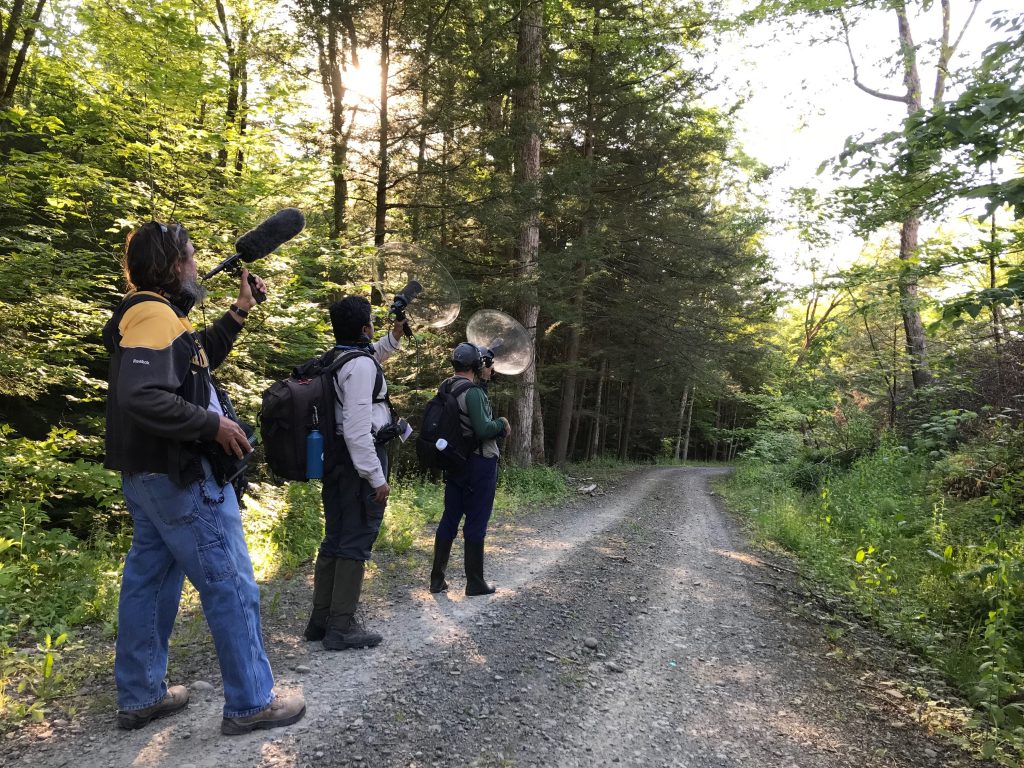
For 35 years the Macaulay Library has been holding workshops to help people learn sound recording techniques. In March 2018, thanks to our great partners at eBird Taiwan, we taught our first workshop in Asia. Twenty-four avid eBirders spent three days learning recording techniques at the Taiwan Endemic Species Research Institute. Since the workshop, they archived more than 500 new recordings from Taiwan. We are looking forward to holding more international workshops in 2019 and beyond. Every year, we also host an annual Sound Recording Workshop in Ithaca in June. The 2018 workshop was a great success, with the 20 participants archiving more than 850 recordings during the workshop.
Contributor highlights
In 2018, Mark Robbins achieved a remarkable milestone. Robbins now has the most recordings in the Macaulay Library, 11,055 and counting.
Saurabh Sawant of Mumbai, India shared 6 recordings that were new to the archive, including the Upland Buzzard, Blanford’s Snowfinch, and Lesser Florican. Saurabh also added several recordings of species with limited representation in the archive. Watch and listen to Saurabh tell his story.
Bob McGuire has been recording birds for 10 years. Over the years he has amassed quite a collection and was committed to archiving every single recording with the Macaulay Library. This year, McGuire completed his goal; listen to over 4,500 of McGuire’s recordings.
The Macaulay Library is now the largest community of sound recordists. If you haven’t started recording but are interested in learning, visit our how-to guide to get started. We think you’ll love it!

The Macaulay Library is looking forward to 2019 and to what new things your photos and recordings can power and what they can help us learn about birds, insects, and amphibians. Stay connected by following us on Facebook, Twitter, and Instagram and tell us what you are looking forward to in 2019. What species are you hoping to record or photograph in 2019?


